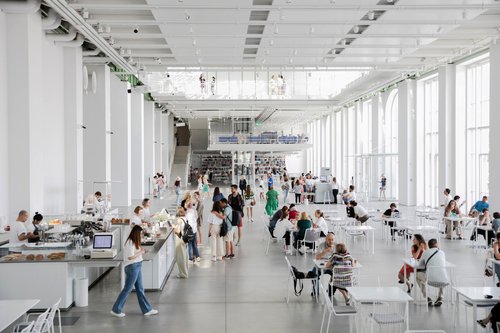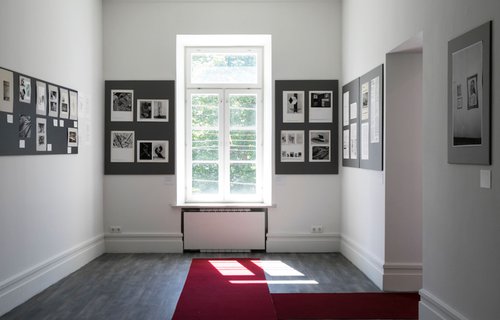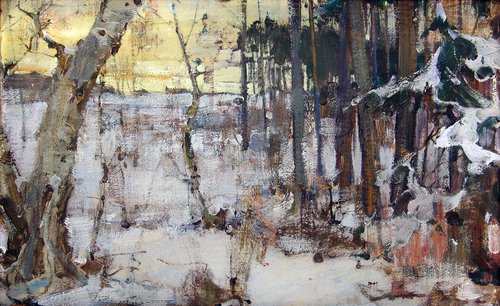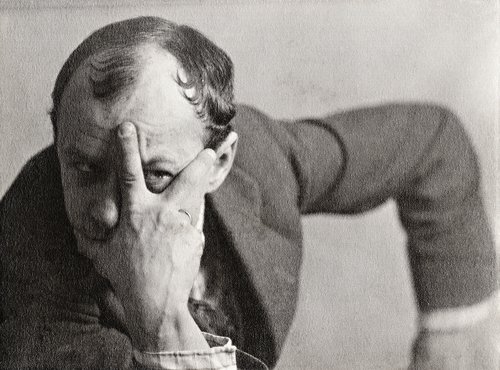Discovering the Russian Fauvists
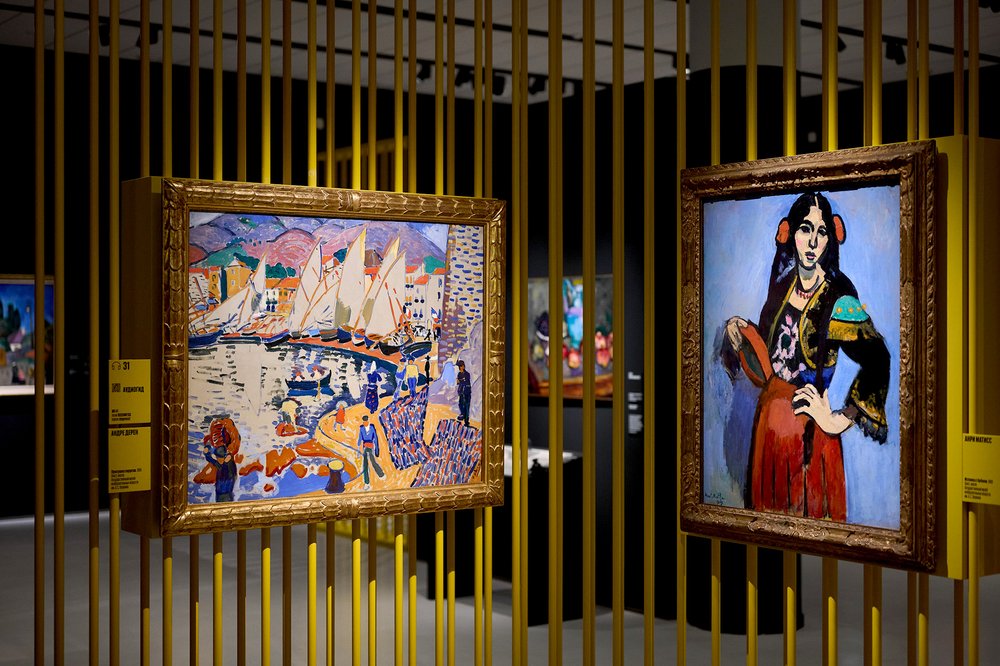
Les Fauves Russes. Exhibition view. Moscow, 2025. Courtesy of Museum of Russian Impressionism
A large-scale exhibition ‘Les Fauves Russes’ on the influence of Fauvism on Russian twentieth century art has opened at the Museum of Russian Impressionism in Moscow.
Featuring a large and colourful trove of works on loan from more than forty Russian institutional and private collections, this is a big show with an inherent sense of rhythm flowing through it, where no one single strand or impression overtakes the overall effect. Curators Ilya Doronchenkov, Vera Ryabinina, and Yulia Petrova have crafted an appealing narrative, with an interesting prologue and lively plot, and from beginning to end they are diplomats of the highest order.
At the beginning of the exhibition visitors encounter a large 1984 painting by Jean-Michel Basquiat (1960–1988) and Andy Warhol (1928–1987), the only joint painting in Russia by these two enfants terribles of the psychedelic era. You will be forgiven for wondering why this work introduces an exhibition about the ‘Russian Fauves’. And this is where the cultural diplomacy starts with an exchange of intricate courtesies. Yulia Petrova, Director of the Museum of Russian Impressionism explains that this work by Basquiat and Warhol tramples over the rules of visual language just as violently as the Fauvists did at the beginning of the 20th century. Thus, at the outset the public is handed a punchy aperitif served in the rebellious language of the “wild ones”. Yet here you might also see something else: a multi-layered path towards restoring cultural connections with global artistic processes which have become damaged today. Even the title of the exhibition which translates as ‘Russian Fauves’ or ‘Wild Russians’ on the one hand panders to an entrenched idea of national exceptionalism and the right of the strong who are not willing to live in a civilised way, notions that are officially nurtured in Russia, whilst on the other, it fits with a well trodden path of the history of Western European art.
Of course, Basquiat’s work naturally fits better into North American trans-avant-garde, neo-expressionism, bad art, and new wave but today these individual movements have become just as popular and an integral part of the art market establishment as Fauvism and Cubism. In Russia exhibition goers are quite familiar with this painting by Basquiat and Warhol: it was recently used in the Russian Museum as a prelude to an exhibition of works from the collection of the Ludwig Museum. And it also graced another product of cultural diplomacy: a show of European art from Russian private collections inspired by Malevich’s Black Square at GES-2 in Moscow which was curated by Francesco Bonami and Zelfira Tregulova.
The reality of course is that you could easily replace this Basquiat/Warhol painting with any other – such as a work by a contemporary ‘wild’ like Jonathan Meese (b. 1970), and you could show the effectiveness of cultural diplomacy just as naively.
The way in which artists like Ilya Repin (1844–1930) and Sergei Glagol’ (1855–1920) raged and slated the art of the so called ‘wild ones’ as they winced at the dismemberment and white faces with empty eye sockets is unthinkable today. This exhibition at the Russian Museum of Impressionism has a certain safe and comfortable appeal suited to art connoisseurs and archivists who love close attention to details. And let me express one heretical thought: Fauvism as a movement is still situated today very much within the pictorial traditions of the 19th century. Fauve paintings are composed in an archetypal way, with a raw focus on how they are engineered. If monumentalists of all epochs began creating frescoes with a simple distribution of masses and parts, it is only the Fauvists who made this into the autonomous essence of the image. Splashes of colour and brush strokes construct concrete form. They are the architectonics of a sculptured formation of image in space which was unchanged since the time of the Romantics. We perceive Fauvist painting today according to those same old classical laws of ‘correct’ optics of a ‘correct’ painting. Incidentally, Basquiat, Meese and other punks, post-punks and adherents of bad art all use completely different nodes of communication: discreteness, automatic writing, and what speculative realist Quentin Meillassoux calls today the principle of contingency or inevitable chance.
Back to the exhibition, which circles around a central cylinder in the basement floor of the museum and somehow associates it with moving pictures in vintage projectors which once created visual wonders or anamorphoses to entertain the masses. The first section of the exhibition called ‘Cage for the Wild Ones’ is dedicated to the French Fauvists. Here the heros are the father of Fauvism, Henri Matisse (1869–1954), Louis Valtat (1869–1952), André Derain (1880–1954), Henri Le Fauconnier (1881–1946). It was art critic Louis Vauxcelles who in 1905 coined the name ‘wild ones’, from the French word ‘fauve’ after calling the Autumn Paris Salon of that year a “cage for wild beasts”. Reflecting on works by the founders of the movement, you see how the intense feelings of freedom and energy behind the creation of a coloured world went hand in hand with a strict, almost analytical discipline. Unsurprisingly, Fauvist canvases are often excellent textbooks on colour for artists who are learning a visual language.
The exhibition continues to develop this analytical and connoisseurial theme as you walk through different sections. The fauvist method is dissected, uncovering its sources and roots. Co-curator Ilya Doronchenkov is a known expert on early 20th century European exhibition organisations and associations and has created a series of mini-novellas or short stories about how the Fauvists interacted with their peers and predecessors at the time – including with their Russian contemporaries, who dominate these sections of the show.
There is ‘Wild Impressionism’ that begins with the art of David Burliuk (1882–1967) and Aristarkh Lentulov (1882–1943). Why not also include early works by Kazimir Malevich (1879–1935)? There are some rare additions: decorative works evocative of stained glass by Boris Tsarnakh (1904–1938), who was shot by the NKVD in 1938. During an interrogation shortly before he died, Tsarnakh said: “I considered that the style of socialist realism in art, which has been repeatedly stipulated in party and government decisions, cannot be the only and exhaustive one. This recommendation thereby limits the creativity of artists... The life of artists in capitalist countries is significantly better than in the USSR.”. There are also paintings by Sergei Lobanov (1887–1942), once the keeper of the art collections of Sergei Shchukin and Ivan Morozov, who collected the French Fauvists and introduced young Russians to them in the 1910s. Lobanov, who died in 1942, is represented in the exhibition by a stunning blazing bouquet of peonies, not inferior in quality to paintings by his friend Ilya Mashkov (1881–1944), whose exhibition is running parallel at the State Tretyakov Gallery.
There are sections on ‘Wild Symbolism’, ‘Primitivism’, ‘Cézannism’ and finally ‘Parizhach’i’ which refers to artists from the Russian Empire who settled in Paris and belonged to the Paris School, whose leaders were Chaim Soutine (1893–1943), Amedeo Modigliani (1884–1920) and Marc Chagall (1887–1985). And these interesting curatorial novellas are compelling with thoughtful juxtapositions of works by both recognised Russian artists and new discoveries. Thus, among the ‘Parizhach’i’ there are works by the ‘Parisian’ Norwegian Christian Cornelius Krohg (1852–1925), who studied in Russia. Krohg painted in the spirit of Matisse, Maurice de Vlaminck (1876–1958) and Albert Marquet (1875–1947) and after first attending Ilya Repin’s classes in the early 1910s he took part in the Bubnovy Valet (‘Jack of Diamonds’) group.
The curators of the exhibition have succeeded in creating a rich visual dialogue between artists who can be called the headliners of fauvism and those who have been unfairly forgotten and lost in the dark folds of history. It is for this reason that the exhibition ‘Russian Fauves’ is a notable event on the map of Moscow’s artistic life.














